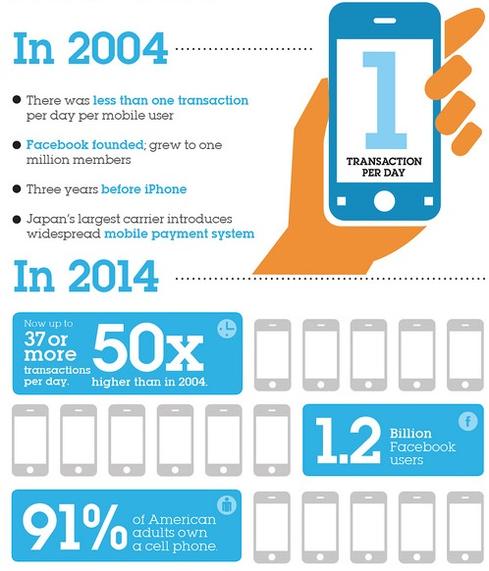IBM Mainframe Makeover: Mobile, Big Data Reality CheckIBM Mainframe Makeover: Mobile, Big Data Reality Check
IBM z13 refresh packs performance gains, but can it really join the mobile, big data, and cloud age? Here's a look at aspirations versus realities.


8 Quiet Firsts In Tech In 2014
8 Quiet Firsts In Tech In 2014 (Click image for larger view and slideshow.)
Yes, many of the largest organizations -- big banks, big insurance companies, big retailers, and big government agencies -- still run IBM mainframes. So when IBM announces a new generation of the platform, as it did on Tuesday (on its usual two-year cycle) with the release of the z13, hardware unit financial results always perk up -- which is news IBM could use these days.
Advances in chips and memory always bring new heights of performance, and it's no different with the z13. IBM says the new machine can process 2.5 billion transactions per day -- "the equivalent of 100 Cyber Mondays every day of the year." But IBM is also doing its best to give the z13 a very modern spin, touting mobile, cloud, and big data analytics performance.
How real are these claims? Here's a closer look at realities versus aspirations.
[Want more on IBM's hardware business? Read IBM Sells Chip Business, Declines Continue.]
Hardware constantly evolves, but 50-year-old mainframes have required periodic makeovers. Fifteen years ago, for example, IBM took advantage of virtualization to enable the z series to run Linux- and Java-based applications. That has opened the door to massive workload consolidation, and mainframes now run all types of Linux-based apps, such as mission-critical SAP apps and Oracle databases, while still running Unix apps; iSeries (formerly AS/400) apps; and classic CICS (Customer Information Control System), IMS, and DB2 workloads on the z/OS mainframe operating system.
That consolidation story still has strong appeal, and it helps the mainframe to win 80 to 100 new customers per year, according to IBM. (IBM could offer no details on how many customers get off mainframes each year, but a spokesperson says it's a short list of smaller companies.) Some new customers run Linux exclusively, as is the case with Brazilian credit union Sicoob, which first started using a z-series machine four years ago and is now among IBM's top-ten mainframe customers.
Mainframe as mobile platform?
IBM's z13 announcement put a big emphasis on meeting modern mobile demands, but surely it's not suggesting that companies should build mobile apps to run on mainframe, is it? Well, yes and no. Smartphones and tablets are in no way different from PCs, in that they're access devices calling on backend systems that run on mainframes. But because they're so handy and accessible, these new devices are generating a tsunami of requests for information. People now check account balances 12 times a month where they might have done so twice a month on a PC.
The z13 better addresses mobile workloads simply by offering more processing power. Another answer here is z/OS Connect, a connector technology that supports the delivery of information from CISC, IMS, and DB2 in a RESTful manner with simple API calls. Billed as a linchpin of Web, cloud, and mobile enablement for mainframe, z/OS Connect was introduced last year. It is compatible with z12 servers.
IBM also hopes that mobile apps might be developed to run on the mainframe. Here, IBM has ported its Mobile First (formerly Worklight) mobile app development portfolio to run on zSeries, and IBM says there are also plans to support IBM's Cloudant NoSQL database service and third-party products like MongoDB on mainframe. NoSQL platforms, often running in the cloud, are where the lion's share of mobile development and application delivery is happening these days. It remains to be seen whether third-party vendors and customers will bring this work onto the IBM mainframe in IBM's cloud.
Analytics and big data on mainframe?
In 2011 IBM introduced the IBM DB2 Analytics Accelerator (IDAA), a coprocessor that essentially puts a Netezza-based data warehouse alongside mainframes handling transactional workloads. The benefit is that you can do analysis of the transactional data on the mainframe without moving that information or degrading the performance of the transactional system.
With z13, IBM is putting more of its software onto the IDAA, including SPSS for analytics and Cognos BI for reporting. This opens up support for real-time fraud detection, real-time upselling and cross-selling, and other opportunities driven by predictive analytics. One major insurance company using this capability is shifting to doing fraud-detection analysis against 100% of the claims it processes on the mainframe. Previously the company used red-flag rules and transaction thresholds to kick out roughly 10% of its transactions into a separate analytical fraud-detection app, but now it can analyze every claim in real time.
The benefits here are twofold: Claims that turn out to be legitimate won't be delayed, risking penalties. And fraudulent claims that didn't set rules or value thresholds won't fall through the cracks or require follow-up investigations. In another real-time use case, IBM says a chain of Eastern European gas stations and convenience stores is using real-time analysis for upselling at checkout time. When customers fill up their gas tanks, real-time checks of the loyalty program trigger discount offers that have increased total sales.
IBM says z13 can easily support distributed systems that have become synonymous with big data analytics, but here, too, IBM's ambition will confront market realities. IBM has ported its own BigInsights Hadoop distribution to run on the mainframe, for example, but there hasn't been a stampede of third-party players in the big data community following suit. Veristorm, for one, has a Hadoop distribution ported to run on System z, but most distributed big data platforms -- Hadoop and NoSQL databases -- were designed specifically to run on commodity x86 servers. The whole idea is cheap compute. IBM says that with virtualization, one System z chip can handle the equivalent of 15, 20, or even 25 x86 chips. But if the software was designed to run on x86 and nobody has bothered to port it, it's a theoretical argument.
Cloud on mainframe?
The list of software designed to run on System z and IBM Power servers is long, but what's compatible with x86 is much longer. This is a big reason IBM bought (x86-centric) Softlayer -- to be at the center of its cloud story. IBM's cloud didn't catch fire until Softlayer entered the picture. IBM can talk about support for Linux, KVM virtualization, and OpenStack, and ambitions to see all sorts of third-party software running on mainframe. But the software that can run System z today and what IBM hopes for are two different things.
Where big companies already have big-iron workloads, the System z has already proven its appeal in workload consolidation, private cloud, and hybrid cloud scenarios. In fact, I suspect the success of System z has had a lot to do with the hardships of the IBM Power line (caught in a closing vise between System z and x86). But where the core of cloud deployment and big data activity is concerned, it will be an uphill climb for IBM to persuade those communities to run on System z, no matter how trivial porting software might be.
Employers see a talent shortage. Job hunters see a broken hiring process. In the rush to complete projects, the industry risks rushing to an IT talent failure. Get the Talent Shortage Debate issue of information today.
About the Author
You May Also Like






